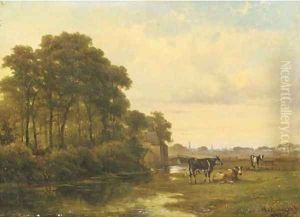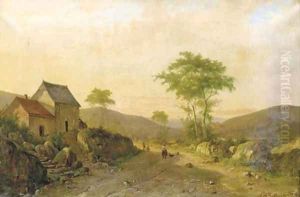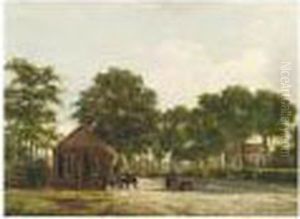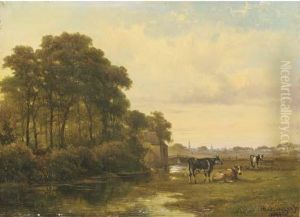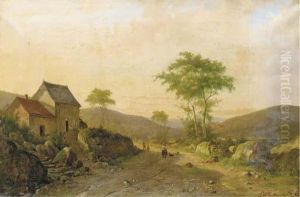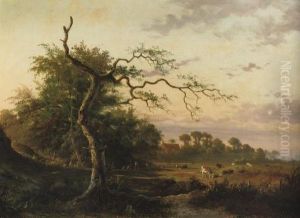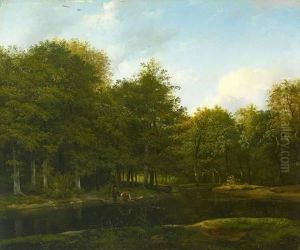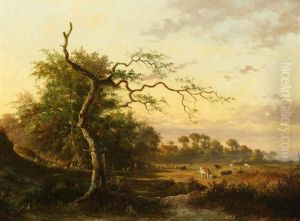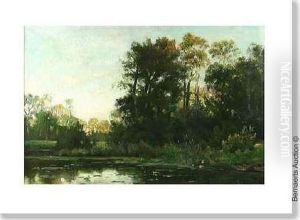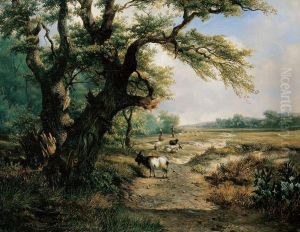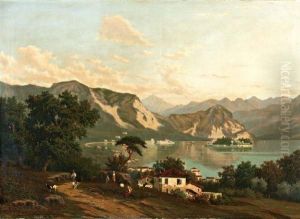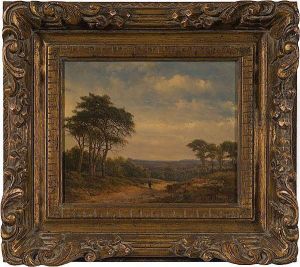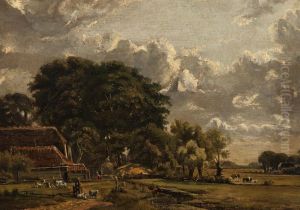Alexander Hieronymus Jun Bakhuyzen Paintings
Alexander Hieronymus Jun Bakhuyzen, born in 1825 in The Hague, Netherlands, was a distinguished 19th-century Dutch landscape painter and engraver, known for his meticulous attention to detail and his ability to capture the serene beauty of the Dutch countryside. Stemming from a family with a rich artistic background, his father, Hendrik van de Sande Bakhuyzen, was a prominent landscape artist, which undoubtedly influenced Alexander's career path and artistic development.
From a young age, Alexander showed a profound interest in art, a passion that was nurtured by his father's guidance and mentorship. He pursued his artistic education at the Royal Academy of Art in The Hague, where he was exposed to the principles of the Hague School, a movement known for its realistic depictions of Dutch landscapes and rural scenes. Alexander's work, however, transcended the typical characteristics of the Hague School, incorporating a unique blend of realism and romanticism, which set his paintings apart from his contemporaries.
Throughout his career, Bakhuyzen enjoyed considerable success and recognition. He was known for his detailed landscapes that often featured the Dutch countryside, waterways, and pastoral scenes, painted with a precision and clarity that reflected his deep connection to the natural world. His works were characterized by a meticulous attention to atmospheric effects and the changing seasons, capturing the ephemeral beauty of the landscape with an almost photographic realism.
Alexander Hieronymus Jun Bakhuyzen's contributions to Dutch art were significant, and his paintings were widely exhibited in his lifetime, both in the Netherlands and internationally. He was a member of various artistic societies and received numerous awards for his work, further cementing his reputation as a leading landscape artist of his time.
Despite his success, Alexander remained deeply committed to his artistic vision, continually refining his technique and exploring new ways to capture the essence of the Dutch landscape. He passed away in 1895, leaving behind a legacy that has continued to influence Dutch landscape painting. His works are still admired today for their technical skill, emotional depth, and enduring beauty, and they can be found in museums and private collections around the world.
